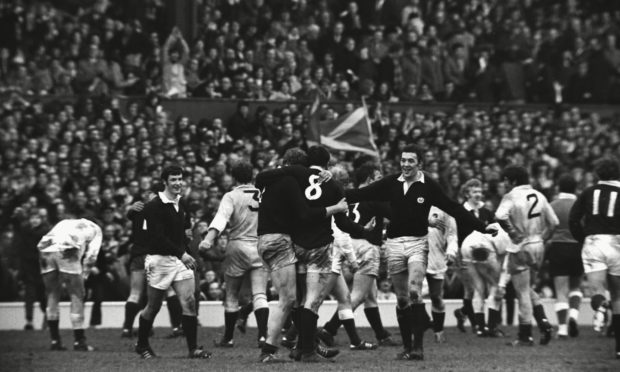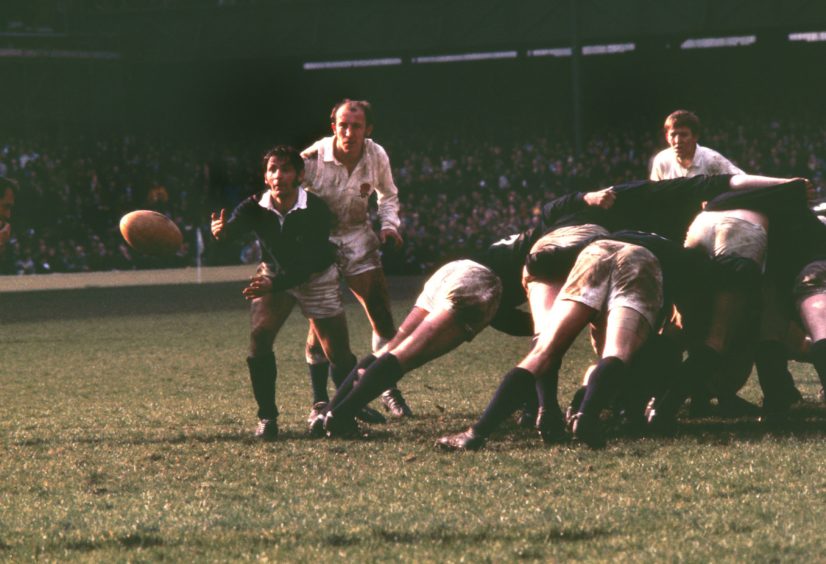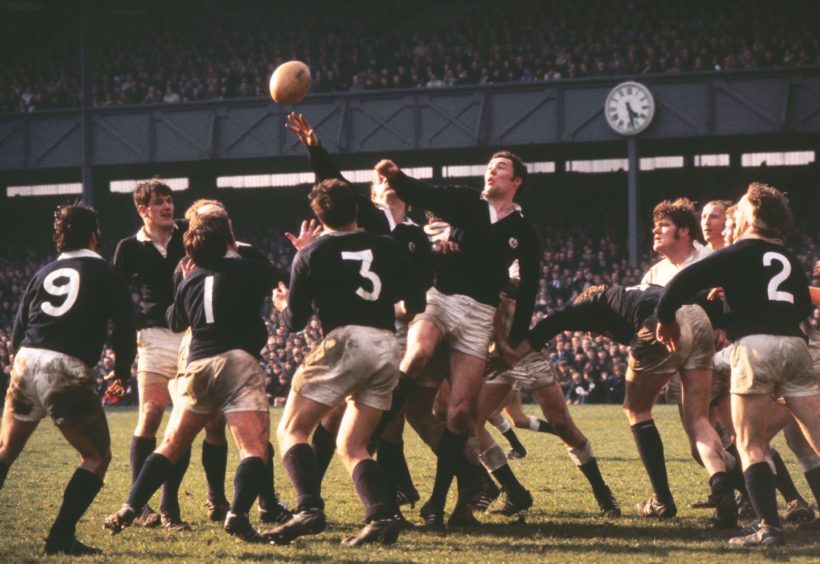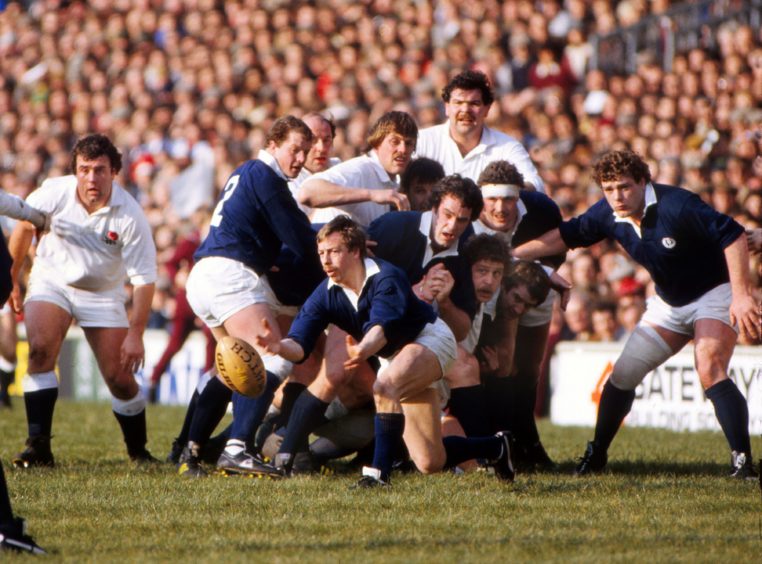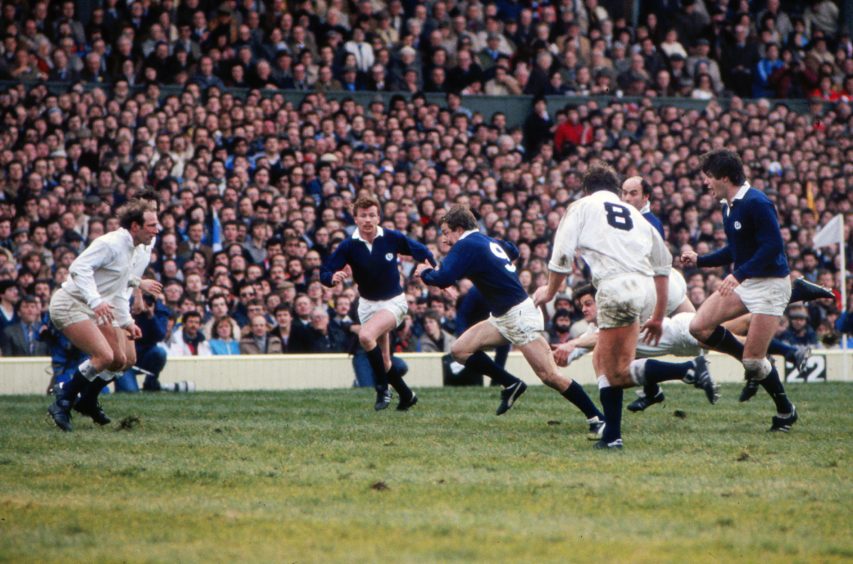Twickenham has always been an inauspicious place for Scotland’s rugby brethren, intent on seizing the Calcutta Cup from their English rivals.
Generations of quality players have made the journey to Richmond with a soupcon of optimism in their hearts only to discover the words “Abandon Hope All Ye Who Enter Here” are subliminally engraved on the gates of the stadium.
It’s more than 75 years since the end of the Second World War, and there have been nearly 40 contests between the Auld Enemies in London during that period.
Yet, with only two successes recorded by the SRU’s finest – in 1971 and 1983 – the tears have far exceeded any amount of blood and sweat.
Former Scotland stalwart John Beattie told me he was “embarrassed” by his compatriots’ dismal record in the Calcutta Cup, away from home.
And Roy Laidlaw admitted he never felt comfortable whenever he walked on to the Twickers turf.
He, at least, savoured the second triumph and admitted it was one of the sweetest occasions in his illustrious career. But it was a hard road to the winning post.
A one-point triumph earned the Scots the spoils in 1971
England had recorded a loss in Cardiff, a win in Dublin and a draw against the French in their three previous outings in the 1971 Five Nations Championship before they locked horns for the Calcutta Cup.
They weren’t in great form, nor, to be honest, were they a particularly good side in the first place.
But the Scots’ most recent success at Twickenham had only arrived via the mercurial brilliance of Wilson Shaw – back in 1938 – so there was no special reason to imagine that the jinx would cease in a new decade.
The hosts opened the scoring with a try from the Harlequins full-back, Bob Hiller, as the prelude to their opponents replying through one of six Gala players who were in their line-up that day, the talismanic No 8 and captain Peter Brown.
He converted his own try, which was worth only three points at the time, for a 5-3 lead. And yet, a brace of penalties from the metronomic Hiller steered England into a 9-5 advantage at the interval and it seemed history was in the process of repeating itself.
Dramatic climax to a match of myriad ebbs and flows
Scrum-half Duncan Paterson, another of the Gala sextet, who went on to serve as Scotland team manager, dropped a goal to narrow the gap to one point, but a try by Tony Neary, the England flanker and a third penalty by Hiller extended England’s lead to 15-8 with only eight minutes remaining. It looked a forlorn cause.
However, even as the clock ticked down, Paterson collected his own chip kick and forced his way over for a try.
Then, in the dying seconds, Ian McLauchlan, the pint-sized but powerful “Mighty Mouse”, thundered to the English 22 from a short line-out.
He fed on to Paterson, whose darting run allowed him to link with Peter Brown, who delivered a wonderful one-handed overhead pass to Chris Rea.
The latter, a product of Dundee HSFP, who became a distinguished radio broadcaster and journalist after retiring from the game, juggled with the ball, but just managed to make the line with his opposite number, John Spencer, clinging on to him.
The outcome hinged on the conversion, but amid a cauldron of noise, Brown retained his composure. As one writer described it: “From a position about half-way between the touchline and posts, he wiped his nose on his jersey and, with a head-on kicking style, blootered the ball through the uprights to mark a famous Scotland victory.”
Then, for good measure, a week later at Murrayfield in a match to mark the centenary of international rugby, Scotland won again against England, by a margin of 26-6.
Rutherford and Laidlaw ran the show in 1983
There hadn’t been much to cheer about for the Scots as they travelled down to London for the last match of the Five Nations Championship in 1983.
They had lost all their previous three games by narrow margins – 19-15 against both Wales and France and 15-13 to Ireland – and were missing their imperious playmaker John Rutherford with injury throughout these stages of the campaign.
However, the Selkirk star “Rudd” was back for the Calcutta Cup contest and while he would never claim to be a one-man team, his presence helped transform his side’s fortunes and they powered their way to a deserved 22-12 triumph.
That remains Scotland’s last victory at Twickenham.
And just to put things in perspective, Margaret Thatcher was in Downing Street at the time, Michael Jackson stood at the summit of the British charts with Billie Jean, petrol cost 36.7p a litre, a pint of milk was just 21p, and the first pound coin had yet to be minted.
And it would be another two months before Aberdeen’s footballers triumphed in the European Cup Winners’ Cup with their famous 2-1 success over Real Madrid.
England were pretty much blown away
John Beattie was part of that collective who swept to a 22-12 victory in London, with tries from Roy Laidlaw and Tom Smith, but he is well aware how many of his compatriots have been sent homewards from Twickers to think again.
Looking back to 1983, the former No 8 said: “We had a group of really world-class players and we had missed out by narrow margins elsewhere in the championship, so we were determined to show our qualities.
“To be honest, it was a very average England team, and we could have won by a greater margin. They were off the pace, we had guys like John Rutherford and Roy Laidlaw, the Bear [the ferocious Heriots prop, Iain Milne], Colin Deans, Iain Paxton, Keith Robertson….a lot of whom earned Lions selection for the tour to New Zealand that summer and who were truly world-class players.
“The club boys from Hawick and Heriots were used to winning every Saturday and they just went out and pretty much blew away their opponents.”
‘There was something different about Twickenham’
In his pomp, Beattie was a formidable competitor, somebody who would have bullocked through a barn door if his stakhanovite coach Jim Telfer had ordered it. But, as he explained, there was always something disconcerting about playing at Twickenham, compared to the rest of the Five Nations venues in the 1980s.
He said: “It was out of town, it was in the suburbs, so it felt a bit alien, a bit otherwordly and you were going into the heartland of English rugby, so it could be off-putting.
“The other grounds, such as the old Parc des Princes and the Arms Park in Cardiff were right bang in the city centres and there was always a real buzz about them as the fans walked to the venues. It was different at Twickenham. It just was.
How will the Calcutta Cup unfold in an empty stadium?
“However, it is about time that some of the new generation were talking about beating England rather than me.
“It is actually a bit of an embarrassment the TV people are still showing pictures from 1983, before any of the lads in the squad were even born.”
The Scots nearly exorcised their demons during a pulsating clash in 2019, which finished in a 38-38 draw, though not before they had launched a magnificent second-half revival, sparked by the ubiquitous Finn Russell, after falling 31-0 behind.
Gregor Townsend’s team will be involved again at Twickenham on February 6, even though the Calcutta Cup will be staged in an empty stadium this year and without the usual raucous racket which pervades these belligerent affairs.
Will the cavernous silence actually boost the Scots?
Or will England ensure the same complacency from two years ago doesn’t resurface and maintain their long supremacy in their own backyard?
It’s just one of the stirring plotlines as the tournament beckons.
